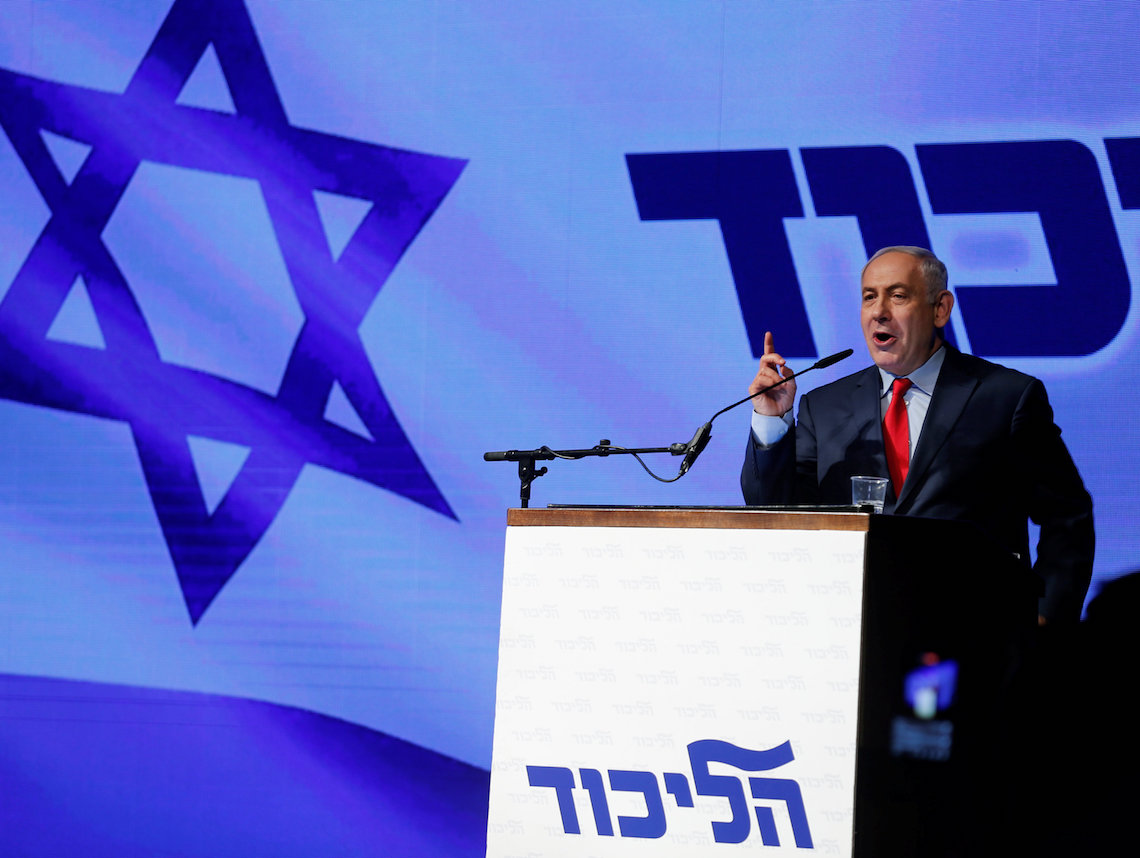 Israeli Prime minister Benjamin Netanyahu speaks during an event by his Likud Party in Tel Aviv, Israel August 9, 2017. Photo by Amir Cohen/REUTERS.
Israeli Prime minister Benjamin Netanyahu speaks during an event by his Likud Party in Tel Aviv, Israel August 9, 2017. Photo by Amir Cohen/REUTERS. We call this format a Timesaver Guide to Israel’s Coming Elections. This will be a usual feature on Rosner’s Domain until April 9. We hope to make it short, factual, devoid of election hype, and of he-said-she-said no news, unimportant inside baseball gossip.
Bottom Line
Splits continue – mergers await.
Main News
The Arab Party is also on its way to a split.
Netanyahu made his case against pre-election decision on hearing.
Internal security warns from outside interfering in election, Russia rebuffs allegations.
Schedule
Feb. 11 is the day of Labor Primaries.
Developments to Watch
Political: Arab split could mean two Arab parties in the Knesset, or one party that does not cross the finish line (leading to a reduction of the record number of Arab MK’s in the current Knesset).
Personal: According to polls taken since she split with the Labor Party, Tzipi Livni does not make it into the next Knesset. She must find a new political home, or she might disappear.
Material: It’s not clear if and how Russian intervention can impact Israeli voters. This is not America: Voters are generally speaking more informed, engaged and involved.
What’s the Race About
Still nothing. But to get some more input listen to the Rosner’s Domain podcast with veteran political commentator Yaron Deckel.
Possible Wild Cards:
A decision to indict/not indict Netanyahu.
Resignation of Labor’s Avi Gabbay.
Violence in Gaza.
The Blocs and Their Meaning
We offer two options of political blocs. In the graphs bellow you can see what happened to these blocs since Dec. 25, the day new elections were announced. Since then, parties fractured, but blocs remain relatively stable.

What you can see next (again, for the two options) is how little changed on average since the beginning of 2018. We compare the average of polls since January 2018, to the average of the last 5 polls. The result: two to three more seats to the center, one to two less seats to the right and the left. Over all, the political situation remains the same. A coalition can be formed by the right plus some of the center, or by the center plus some of the right.

Focus on One Party
While other parties go up and down, the Likud Party is relatively stable. It also has a projected number of seats that’s more than double than the next party in line. If there are no mergers that can push other parties above the 25-seat line, there is little doubt that the Likud will form the next coalition. The President cannot let a party with 13 or 17 seats to form a government, when Likud has 28 or 30 seats.
























 More news and opinions than at a Shabbat dinner, right in your inbox.
More news and opinions than at a Shabbat dinner, right in your inbox.